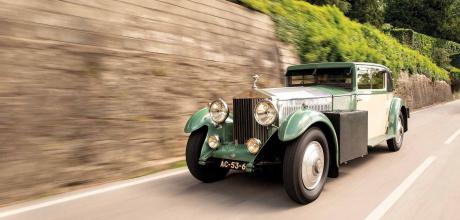1930 Rolls-Royce Phantom II by Weymann
Rolls-Royce’s Phantom II defined luxury car supremacy in the early 1930s. Richard Heseltine drives a special Weymann-bodied example that escaped a premature death.
ROLLS-ROYCE PHANTOM II Unique story of elegant 1930s indulgence
Ok, whose cockamamie scheme was this? The vistas are sensational; as befits a house atop a big-boned mountain. They should be, given that the owner once operated the Orient Express. It is extremely tranquil here, the palatial gardens ending somewhere above the clouds; the bit where you arenadvised not to walk in case you upset the wild boars. Heaven forbid. None of this is remotely of interest right now, mind, not least because the driveway has 90° angles and the sort of incline where ideally you would have a bit of a run-up first. About a mile or so should do it.
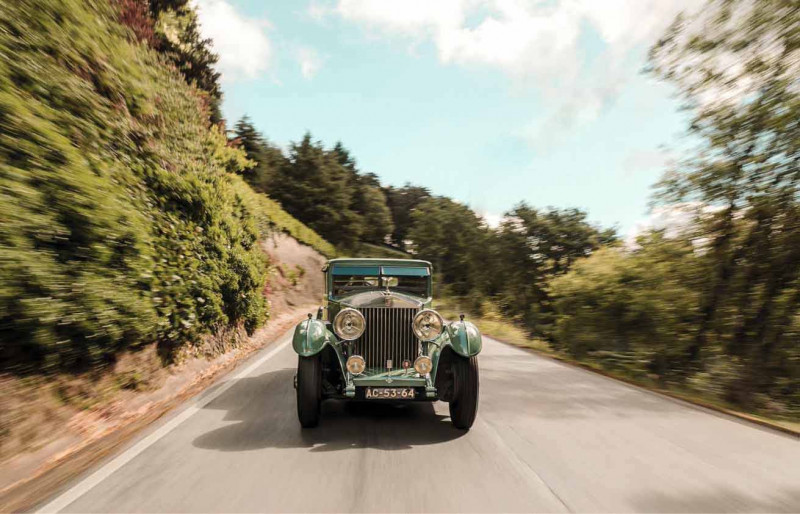
As such, this is not the ideal location to become au fait with a 1930 Rolls-Royce Phantom II.
It is cosy in here, despite the enormous dimensions. The view through the shallow windscreen comprises mostly sky, and the sun is glinting off its unpainted aluminium bonnet like the refraction of a diamond. The car emits only the faintest of burbles, as is to be expected, and it’s a case of right full rudder and up, aiming for the narrowest of entrances. And finally we are through.
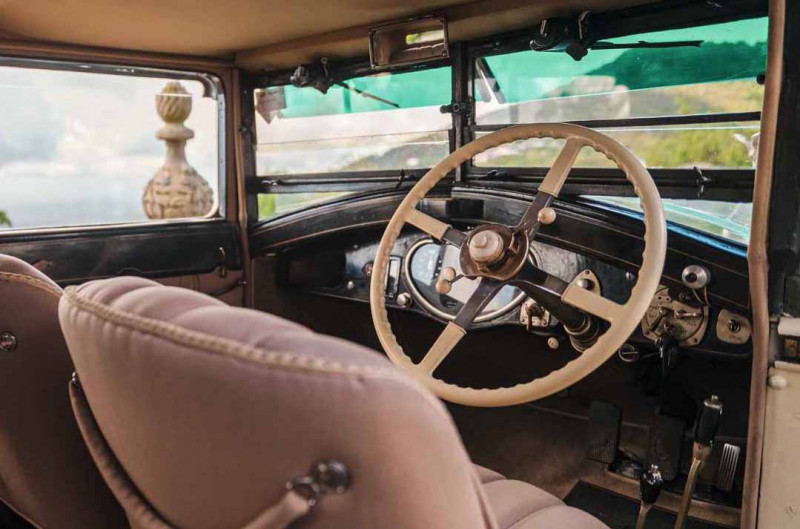
The Phantom II has the turning circle of an ocean liner yet — thankfully — sufficient torque to flatten the topography and steering that doesn’t quite require the upper body strength of Charles Atlas to conduct. This is clearly going to be a day of surprises. Whatever metric you judge things by, this car is magnificent. That, and perhaps a mite peculiar, too, simply because it was tailored to suit the exacting whims and requirements of the Portuguese Rolls-Royce concessionaire.
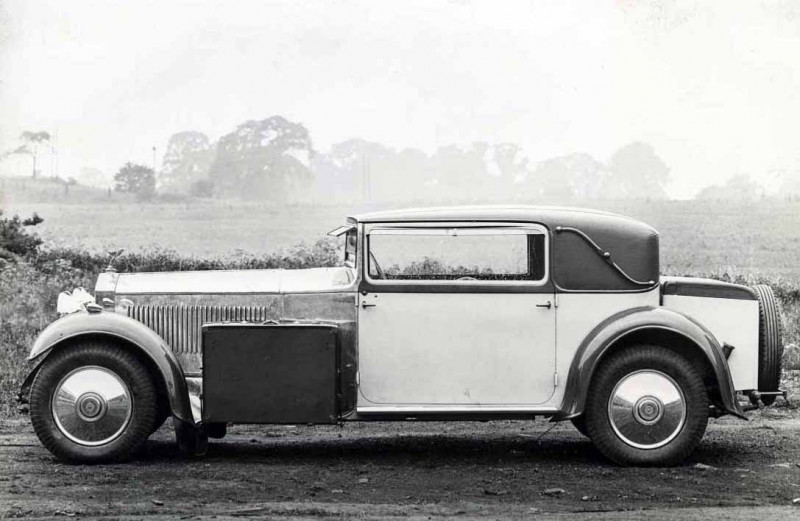
He wasn’t alone in loving the Phantom II. In fact, the car’s subsequent keeper loved it to the point of obsession if the stories associated with it are to be believed. There is little reason not to.
There are no gaps in its history, after all. Dubbed a ‘Sports Coupe by the man who commissioned its construction, it was among the more outre variations on the theme — although there was sound reasoning behind some of its more leftfield features. The car was partly intended to function as a calling card for the marque importer yet was specifically put to his personal use on long-distance road trips, a tradition the current custodians cleave to.
Few competitors in period were as adept as the this was a particularly daring design, because it shared some DNA with its predecessor, which in itself wasn’t entirely new. The New Phantom was announced in May 1925 as a successor to the 40/50hp Silver Ghost. It became universally known as the Phantom thereafter, and the Phantom I retrospectively. Power came from a 7668cc overhead-valve straight-six with a slightly smaller bore relative to that of the Silver Ghost, while the stroke was longer.
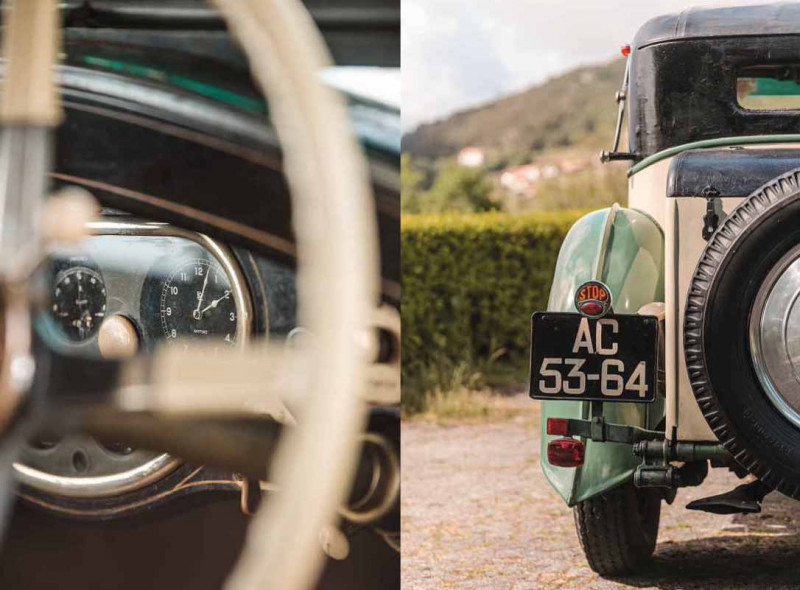
As was par for the course, cars were supplied in rolling chassis form, the Phantom I attracting the cream of coachbuilders, both established and emerging. Work began on its replacement in late 1927, although Rolls-Royce was still picking up the pieces following the death of its workaholic leader Claude Johnson, a man often described as being the hyphen in Rolls-Royce. He had died a year earlier from pneumonia, among his lasting legacies being the retention of the archetypal ‘Grecian Temple’ radiator grille despite internal and external calls to do away with it. Although the firm was reeling from his loss, the Phantom II emerged in September 1929 to great acclaim.
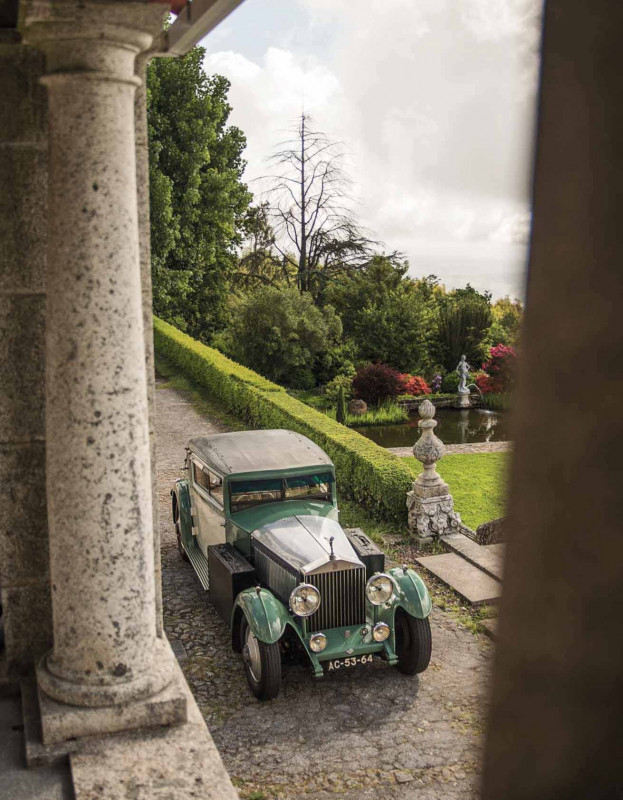
It had made the leap from prototype to production status in just two years, a remarkably short gestation period given that it ended up being far more than a reheated older design. The new strain boasted an all-new chassis, while a centralised lubrication system was among many original features that would remain a Rolls-Royce (and by extension, Bentley) constant well into the post-war era. The development team, based in Nightingale Road, establishing a supplementary centre Derby, had worked tirelessly to cut the lead time, of operations in Chateauroux, midway between the Loire Valley and Limoges, for road testing.
The Phantom II was developed continuously throughout its life, too, arguably the most desirable variant being the Continental edition that was aimed at owner/drivers rather than those who preferred to be chauffeured. It employed a shorter chassis, a more relaxed driving position created in part by lessening the angle of the steering column, and a lower centre of gravity, all things being relative, of course. Not surprisingly, Phantom Ils in their various forms attracted the Beautiful People, owners including glitterati such as Charlie Chaplin and Noel Coward, racing drivers Sir Malcolm Campbell and Woolf Barnato, and the aristocracy, Lord Mountbatten and the Prince of Wales being among their number.

It had no real homegrown rival during the 1930s, either. Rolls-Royce acquired Bentley Motors in 1931 following a dramatic eleventh-hour intervention at the Receivers’ Court. A solicitor sprang to his feet and claimed that he was acting on behalf of the British Central Equitable Trust, a body that nobody else in the room had heard of. His paymaster offered a larger sum for the marque assets than had been agreed between Bentley and Napier, and this subterfuge worked. Rolls-Royce’s new managing director Arthur Sidgreaves had vowed to crush the opposition, and he got his way. The proposed Napier- Bentley, which would have been based on the Bentley 8 Litre, was killed off at a stroke.
The Phantom II continued to 1935, when the Phantom III was unveiled at the British International Motor Show at Olympia. Rolls-Royce confounded the media’s expectations that it would have a straight-eight engine, instead drawing on experience with aero engines and equipping the replacement with a VI2 that was eerily smooth. At that point, 1681 Phantom Ils had purportedly been made of all types (some sources suggest 1767), our’ car having been built at the behest of Jose Rugeroni, a man steeped in marque lore. As was his son, Harry Charles, who was partway into a five-year apprenticeship at the Derby works when he oversaw the construction of his father’s car.
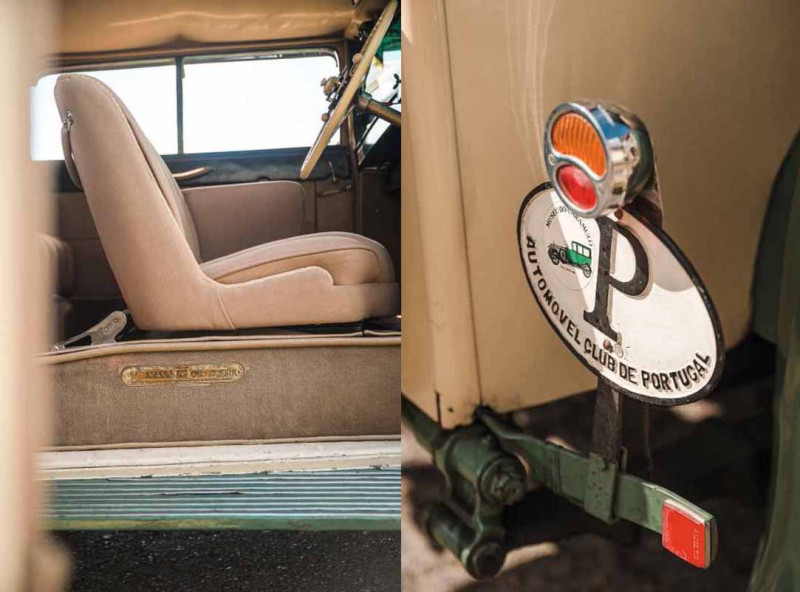
That included the body, which was crafted by Weymann, a firm better known for its system of clothing cars with an ultra-light wooden framework covered in tightly stretched fabric, which was licensed extensively during the 1920s. The firm’s founder Charles Weymann was nothing if not ambitious, greatly expanding his businesses via two factories only to see the number of bodies — manufactured both internally and under licence — decline dramatically towards the end of the decade. He responded with a semi-panelled’ system, in which the lower half of the body comprised steel or aluminium, with fabric confined to above the waistline.
Weymann’s Motor Bodies clothed all manner of cars during this period, from Austin to Stutz, the Phantom II being perhaps the most outlandish. This was due in no small part to the door arrangement. Rugeroni Sr designed the all-aluminium body and requested a ‘double entree’ set-up that in essence meant they were hinged at the front and the rear. Chassis 75GY arrived in Portugal in 1930 and was awarded class honours at the Campo Grande concours in Lisbon. However, it wasn’t officially registered until April 1932 after ownership passed to Carlos Michado Robeiro Ferreira, by which time the ‘innovative’ door hinge arrangement had been junked because it was deemed to be dangerous.
«The moneyed engineer was clearly besotted with the car, to the extent that his will instructed that it be destroyed following his death. The Rolls-Royce was his great love and he wanted it to die with him. The car was duly dispatched to the scrapyard in the early 1950s.

But there the story takes a perhaps unexpected turn, as the scrapman couldn’t bring himself to take an axe to the car. It was saved by Joao de Lacerda, founder of Museu do Caramulo, in March 1956, by which time it was showing 78,860km on the clock. Scroll forwards three years and de Lacerda instructed Harry Charles Rugeroni to revive his father’s dreamchild. More than six decades later it wears its older restoration status well, having the appearance of a ‘driver’ rather than a trailer queen.
It forms part of a collection that comprises umpteen grand marques, but this is the car that its rescuer’s grandchildren use on epic jaunts, not least of which was the 1000 Mile Trial revival event in 2014. The point is, it gets used. It shows. And it’s hard not to get swept up in the romance of this car, especially in these surroundings. Little about the Phantom II is in the realms of the ordinary, not least the sense of scale. That, and theatre. It is in no way dainty, though the lofty beltline and low roofline lend it a rakish air. There are also suitcases sited on the front wings, which is a practical arrangement, not to mention a whimsical one.
Open the vast rear-hinged ‘suicide’ door and you step up and into the Phantom II, the gear- and handbrake levers to the driver’s right impeding easy access until you develop ‘the knack’. For such a huge car, the cabin seems relatively small though it isn’t cramped. Look out through the windscreen and you’ll feel as though you are peering out of a letterbox, and the view ahead along the vast acreage of bonnet is tinged with green thanks to the tinted sun-visors. The burr-walnut dashboard is awash with stylish black-faced dials, and the four-spoke steering wheel with its assorted controls in the centre boss (fuel mixture and so on) is a throwback to the Ghosts of old.
Once primed, the Phantom II starts without fanfare, the idle being as unruffled as you might imagine. While not exactly nimble, or even close to that, it is far easier to guide at low speeds than preconceptions would have you believe. It doesn’t particularly like the stop/start stuff, but it isn’t truculent with it. Nor is it a lorry. There’s heft to the controls, but it certainly isn’t intimidating. What this car needs is space, and plenty of it. Once onto open roads, even the kind with sweeping bends rather than long straights, it becomes relaxing to drive. Anyone reasonably well-versed in old cars will have no problem mastering the Royce, and quickly.
The gearchange is a joy. The lever requires quite a tug but it slots into place without the slightest whiff of protest. There’s none of the gristle across the gate that you get with some cars of this ilk. It feels precise, as does the worm-and-nut steering once it’s rolling. This set-up is superbly weighted and lacks the expected vagueness or wandering, which is remarkable considering its vintage. Thenthere are the mechanically servo-assisted drum brakes that arrest close on 2.5 tonnes without protest. The ride quality is similarly impressive, even on cobbles, the Phantom
II soaking up the worst imperfections with little in the way of shuddering through the structure.
But the best bit is the engine. The large-displacement straight-six purrs even when under load and climbing a mountain. There is so much torque that you don’t need to change down gears on anything other than the steepest inclines: the Phantom II barely seems to notice them. Combine that with the expanse of bonnet, the Spirit of Ecstasy as your guiding star, and even the briefest of dalliances is enough to leave you smitten.
It is easy to see why the second owner fell for the car’s charms and didn’t want to share the love, even if his desire to take it with him to the grave seems a little extreme. But obsession can be a dangerous thing, and thankfully the scrapman’s empathy prevailed.
THANKS TO Salvador Patricio Gouveia and Tiagp Patricio Gouveia (museudocaramulo.pt), and Adelino Dinis
Clockwise, from above Imposing from the front, thanks to traditional Rolls grille; interior is cosy and elegant; period shot shows doors originally hinged at both front and rear.
Wing-mounted luggage a practical touch; you step up into the cabin and sit high, with legs outstretched; Rolls gets driven well beyond its Portuguese home.
‘It ‘wears its older restoration status 'well, more “driver” than trader queen’
‘Not surprisingly, Phantom Its in their various forms attracted the Beautiful People'
Above and right Phantom escaped a premature fate: its second owner was so besotted that he instructed in his will that it should be destroyed upon his death.
TECHNICAL DATA 1930 Rolls-Royce Phantom II by Weymann
- Engine 7668cc OHV straight-six, downdraught carburettor
- Max Power c140bhp @ 3000rpm
- Transmission Four-speed manual, rear-wheel drive
- Steering Worm and nut
- Suspension Front and rear: beam axle (live rear), semi-elliptic leaf springs, friction dampers
- Brakes Drums, servo-assisted
- Weight 2420kg
- Top speed 84mph


